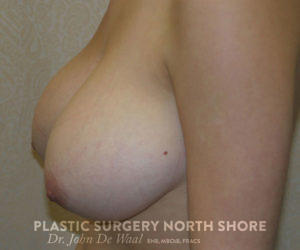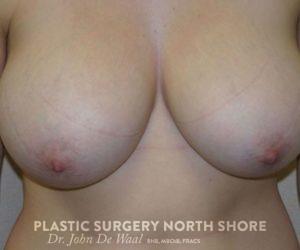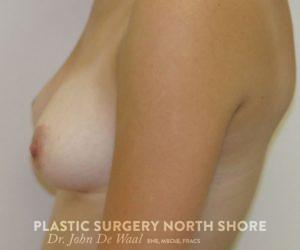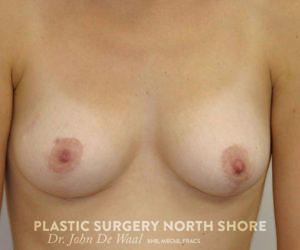Breast Reduction Surgery
Breast size is determined by a number of factors – principally genetic but also dietary and hormonal. Their size and shape then changes through a woman’s life depending on age, pregnancy, contraceptive pill use, weight gain or loss.
Very large breast size can cause a number of problems. Apart from the emotional and social connotation they can interfere with physical activity, cause problems with neck and back pain, poor posture, sweating and irritation under the breasts.
Breast Reduction involves removing a portion of the breast to reduce their size and reforming the remaining tissue into a new breast mound. This results in a smaller, firmer, more ‘uplifted’ breast. The operation can be used to primarily ‘uplift’ the breast rather than reducing their size if desired.
The operation takes approximately 3hrs. You will have a supportive dressing and/or bra in place after the operation and a drain coming from each breast for the first 24-48hrs to stop any blood collecting inside the breast after the operation. A one night hospital stay after the operation is the norm.
The shape of the breast is partly gravity dependant. In the months following the operation the shape will become more natural. Initially they may seem too firm and uplifted but this does settle. To aid in the attaining of a good breast shape and also to minimise the stretching of scars you will need to wear a comfortable and supportive bra for at least 6-8wks after the operation.
The scars from breast reduction are traditionally very long although they are positioned in such a place as to minimise their visibility. Techniques are available to minimise scar length but often the immediate shape of the breast is compromised with the excess skin appearing quite puckered. This settles significantly with time. It takes a few months and if any puckering still remains a small operation can be performed to correct this.
In a minority of cases in which the breasts are of an aesthetic shape with good skin tone, and the volume of the breast is more fat than glandular tissue, liposuction alone can be used to reduce the breast size. This results in almost no scarring. The procedure is also faster and has less complications than traditional reduction surgery. The initial shape however can be a compromise and it takes several weeks for the shape to be restored as time is required for the relative excess skin to ‘take up’
A certain amount of gland tissue is damaged or removed during the operation. This can result in a lessened ability to breast feed. Most women find they can still breast feed though they often need to supplement. It should be accepted though that a reduced ability to breast feed may be the outcome of the operation.
The extent of the operation means some nerves supplying the nipple are cut. While some women state their large breasts had little sensation before the operation and, in fact, increased sensation after the operation, a reduction in nipple sensation should be regarded as a likely consequence. This is usually most marked immediately after operation and tends to improve over the following 3-6months.
While it is theoretically possible to achieve any desirable size by simply removing the right amount of tissue, it is impossible to get an exact match predictably. The amount of reduction sometimes also needs to be offset against a desire to minimise scars and minimise interference with breast feeding. This is something that needs to be discussed with your surgeon. Also remember that breast size and shape change with age, pregnancy, etc. A breast reduction will not stop these changes.
Occasionally a “tidy-up” procedure is necessary when things have settled to gain better shape or symmetry. Most of the time these are minor changes that can be done under local anaesthetic in the rooms. While a minimal equipment fee may be charged (for sutures, etc) there is no procedure cost. If a larger secondary “tidy-up” is required that needs a general anaesthetic, there will be a hospital and anaesthetist charge for the time taken (though no surgeons fee)





